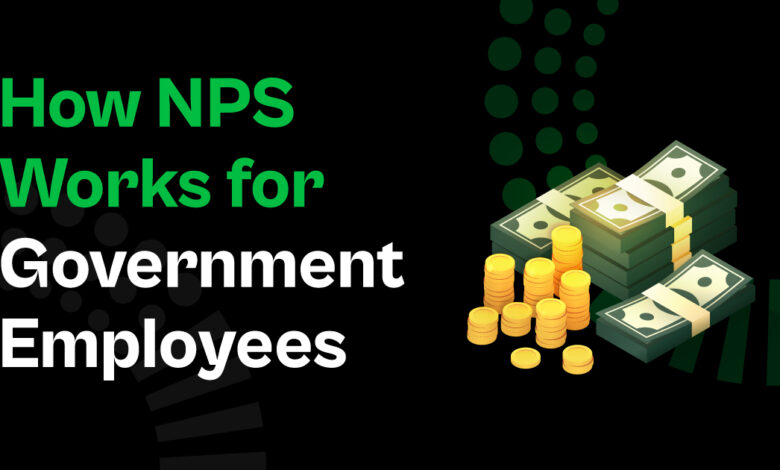NPS for Government Employees: A Comprehensive Overview

The Indian Government is actively formulating diverse schemes prioritising the well-being of its employees, especially focusing on their retirement planning. One such commendable initiative is the National Pension Scheme (NPS), or the National Pension System.
Tailored to align with the fixed retirement ages applicable to all government employees, NPS emerges as a highly advantageous retirement plan. Opting for NPS assures a multitude of benefits that significantly enhance your post-retirement life.
The NPS extends a range of benefits and features to all investors, regardless of their employment status. While the scheme is inclusive for everyone, government employees enjoy additional perks. In this discussion, we delve into the specifics of the NPS tailored for government employees, exploring the rules and regulations they need to be acquainted with.
What is the NPS?
The NPS stands out as an exemplary retirement plan orchestrated by the government, catering to the needs of both the general population and government employees. Positioned as a cost-effective retirement solution, this national pension system was inaugurated in 2004, serving as a comprehensive financial strategy for all Indian citizens, including government employees.
Upon investing in the NPS, a significant development unfolds—the creation of a Permanent Retirement Account Number (PRAN). This enduring account number is diligently overseen by the Central Recordkeeping Agency (CRA).
Focusing on the NPS for government employees, it is noteworthy that it has become compulsory for all central government employees. Additionally, with the exception of West Bengal, all states have embraced and implemented this scheme for the welfare of their employees.
Rules of NPS for Government Employees
- The deduction for government employees is 10%, and for central government employees is 14%
- Nodal officers will send the application for an NPS for a government employee.
- The contribution process for an NPS for government employees will be through nodal officers. The nodal officer’s funds will be transferred to the trustee bank, along with all the details will be uploaded to the CRA system through the nodal officers.
- Three types of NPS are available for government employees: SBI, UTI, or LIC under PFMs.
- All government employees can use their permanent retirement account number to operate their national pension account.
- The choice of investment in assets in the national pension scheme is the same for both NPS types.
How to Calculate the NPS Scheme?
You can calculate your NPS scheme online while using NPS calculator India. Let’s explore the steps to calculate the NPS scheme amount:
We should know that the NPS calculator uses A=P (1+r/n) ^nt to calculate the amount. Where,
P= Principle Amount
R/r= Interest rate per year
N/n= No. of times interest compounds
T/t= Total tenure
- Enter the desired amount you want to invest in the NPS scheme per month.
- Enter your current age.
- Enter the rate of interest.
After putting all the details, you will get the NPS amount details easily.
Wrapping Up
The allure of government jobs in India is undeniable, given their array of benefits and job security. Recognising the significance of post-retirement security, the government has established various employee pension schemes, with the added advantage of tax benefits under the NPS scheme.
Mandatory for all government employees, the NPS entails a monthly contribution of a certain percentage of their earnings towards securing their future. The convenience of online tracking further empowers government employees to monitor their NPS accounts seamlessly. If you’re a government employee, delving into the importance of NPS is crucial.
Read more: https://kurtperez.de/



